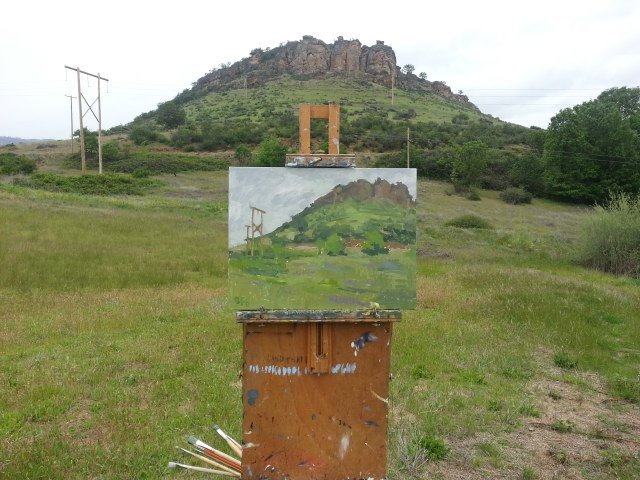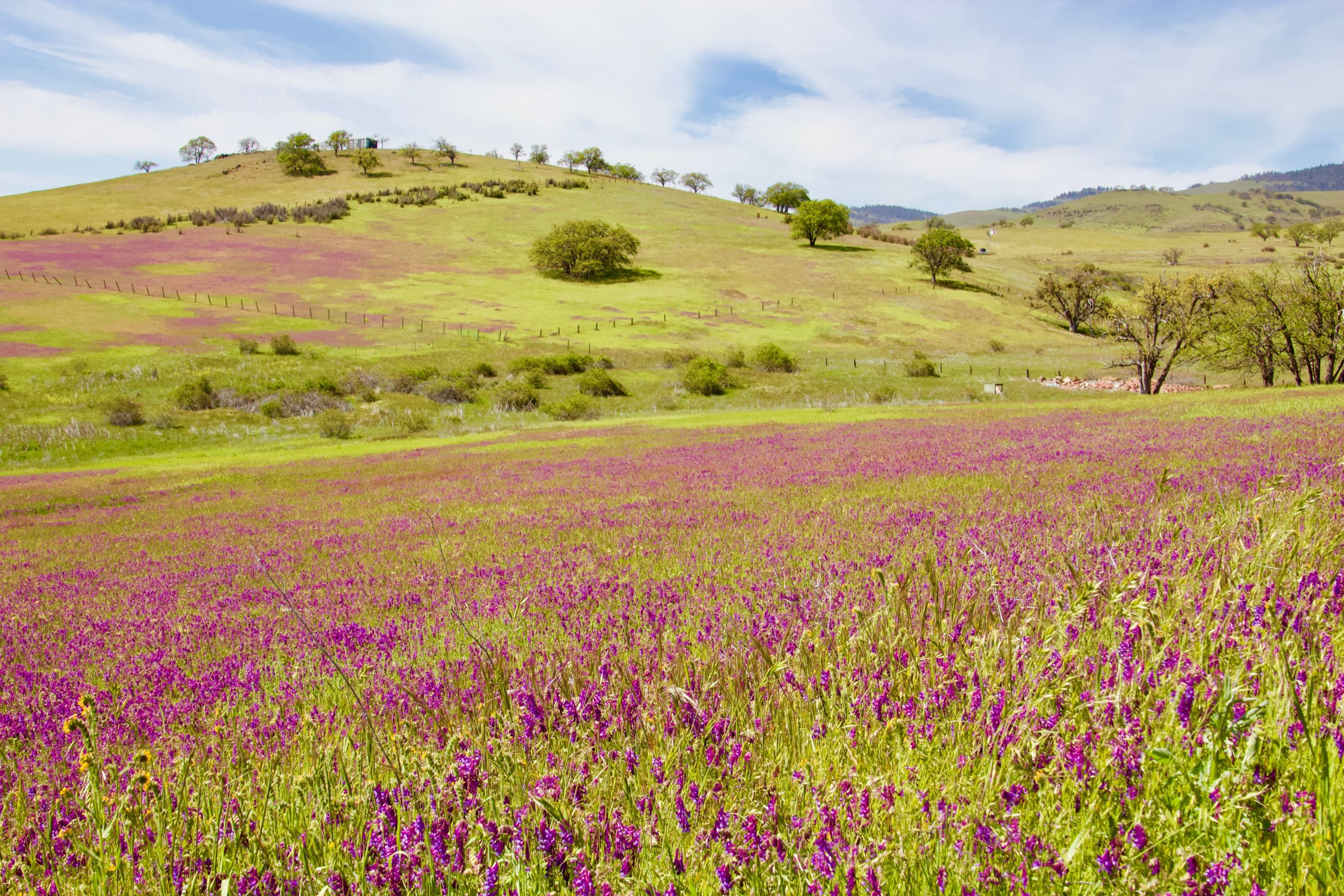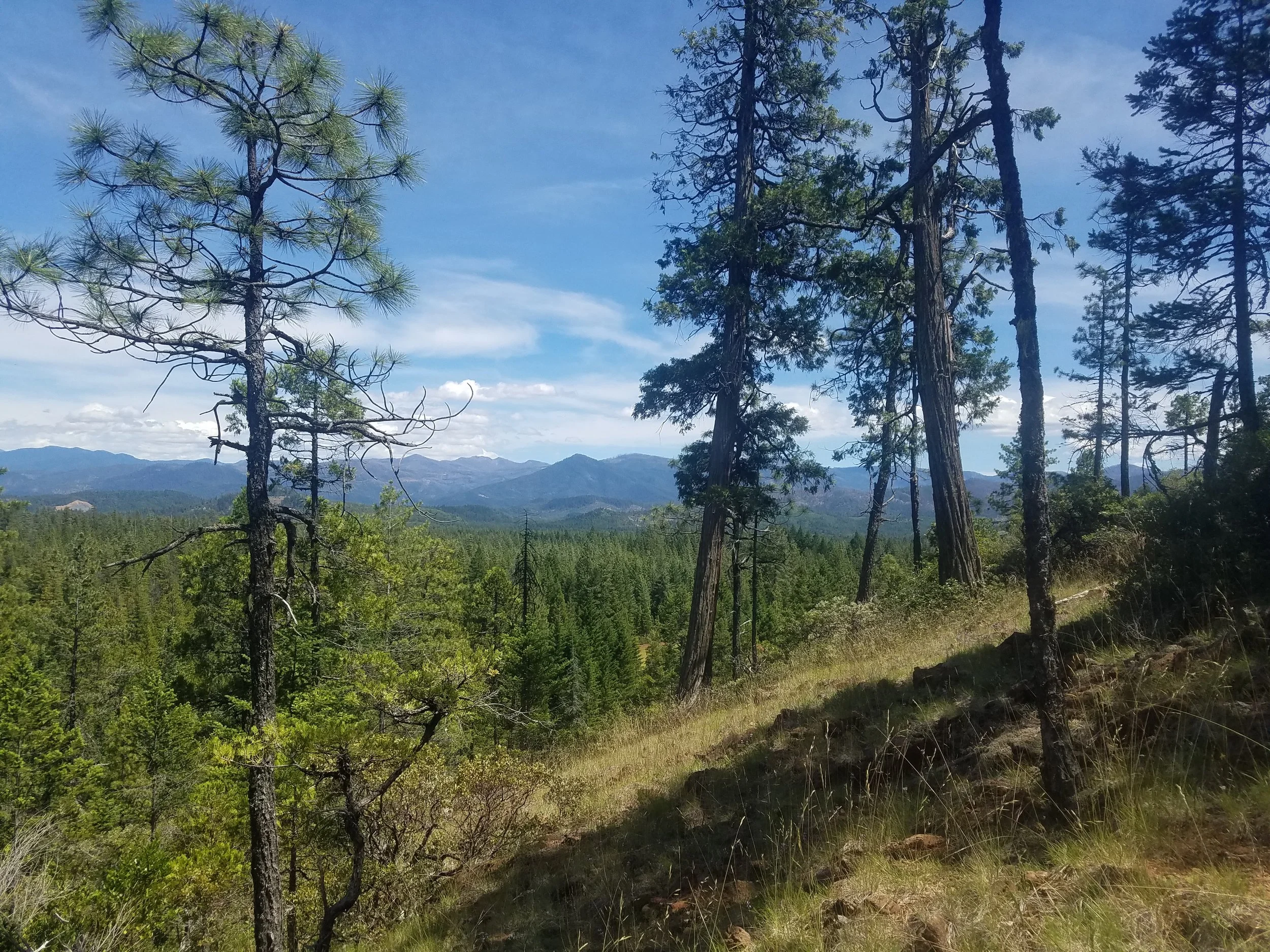“Where the river flows”
When Artist Melinda Whipplesmith Plank discovered printmaking, she was elated. Finally, a medium that took her meticulous drawings and transformed them into something earthier and more evocative than she had the wisdom to do herself. Not only that, but she could make multiple copies without compromising the original image. It made her smile.
What else makes her smile? An inquisitive otter at the Rogue River Preserve that shared lunch with her back in March. She presumed that it was fish he was gulping down while she nibbled on a salad. Only parts of him were visible as he dove then gazed at back at her over the dancing surface of the water. This close encounter of the loveliest kind inspired a piece for her woodblock print Conservation Series. It is called “Where the River Flows” and is currently on display and for sale at the Hanson Howard Gallery in Ashland through the end of the year.
Melinda’s work is informed by her cattle ranching heritage. It celebrates biodiversity and the preservation of open spaces. Befittingly, she is donating 10% of all sales from the original and the limited-edition original woodcut prints (25 total) to Southern Oregon Land Conservancy. She is also donating a framed original print to be auctioned off at our spring Conservation Celebration.
About Melinda Whipplesmith Plank
Whipplesmith Plank starts a wood cut with a clear idea of what she wants to convey. The medium however, takes her tendency for meticulous detail, chuckles, and pushes the work in a different direction. Forced to simplify and refine the message, her work gains the quality and power which is unique to wood cut printing.
In a 100-year-old barn that shelters her studio, Whipplesmith Plank has created a print making oasis surrounded by animals and open spaces. Her work, influenced by her cattle ranching heritage, explores biodiversity and species interdependency. Combining the rich colors, and simple shapes of traditional wood block prints with expressive line, she beckons the viewer to explore a different reality.
Currently, she is creating prints for several land conservancy groups including the Southern Oregon Land Conservancy and Point Blue Conservation Sciences. Whipplesmith Plank’s work is in the permanent collections of the Leigh Yawkey Museum in Wisconsin and the Maryhill Museum of Art in Washington. She is part of the California Printmakers Association, the Society of Animal Artists, and has served as artist in residence at Glacier National Park and Lassen Volcanic National Park.
The printmaking process…in Whipplesmith Plank’s own words
Why printmaking? It is time consuming, difficult to correct mistakes, and unforgiving. The answer is that despite the exhaustive amount of work involved, the end result is often more evocative, and powerful than when I work in a medium in which I have more control. The message is clarified, the colors truer, and the marks made by cutting into the wood’s surface more decisive.
Basically, a wood cut is an image made by carving into a flat board of wood called a plate. Ink is rolled onto the surface of the plate so anything carved away does not print. Paper is placed on top of the inked plate and the image is transferred by applying pressure. I use an etching press but something as simple as a spoon can be used.
Wood carving tools
Carving plates
My process involves making numerous sketches, often combining or rearranging elements, to simplify shapes and strengthen the composition. Tracing paper is then used to transfer the final image to Shina plywood plates. With Japanese woodworking tools, I carve away the areas I do not want to have print in a particular color. Oil based ink color is rolled evenly onto the wood’s surface with a brayer, paper placed on top, and the whole “sandwich” is then hand cranked through an etching press.
Plate and paper
Inking
The carving, inking, and pressing is repeated for each separate ink color. For an edition of 25 prints with 15 colors, each plate has been hand inked and pressed 375 times. The imperfections caused by manually applying the ink for each color layer make each print unique while giving individual character and a sense of the artist’s hand. In these days of easily obtained, mass-produced perfect images, I find that especially precious.
YouTube videos
Artist Millie Whipplesmith Plank describes the printmaking process behind her 2020 "Birds in Art" artwork "Rapture." The "Birds in Art" 2020 exhibition extends through February 21, 2021, at the Woodson Art Museum.
Meet the award-winning artists from the 2020 Art in the West exhibition-Millie Whipplesmith Plank, winner of the Jury's Choice Award, and Kathleen Frank, winner of the Curator’s Choice Award. Hear more about their work, where they find inspiration and why they are excited to part of the Museum’s Art in the West.











